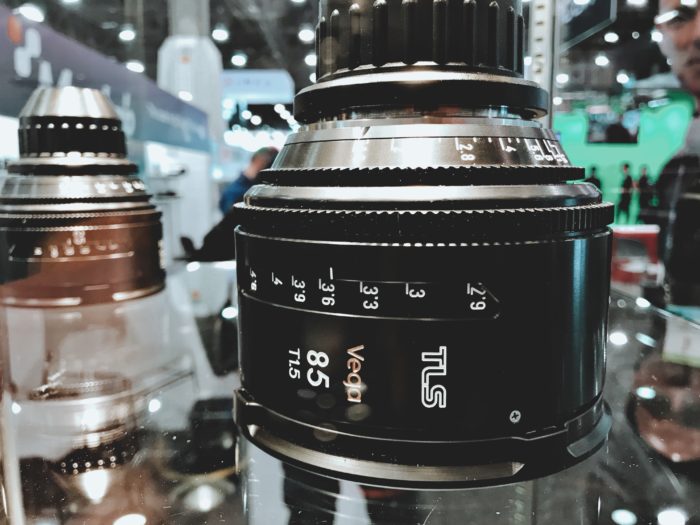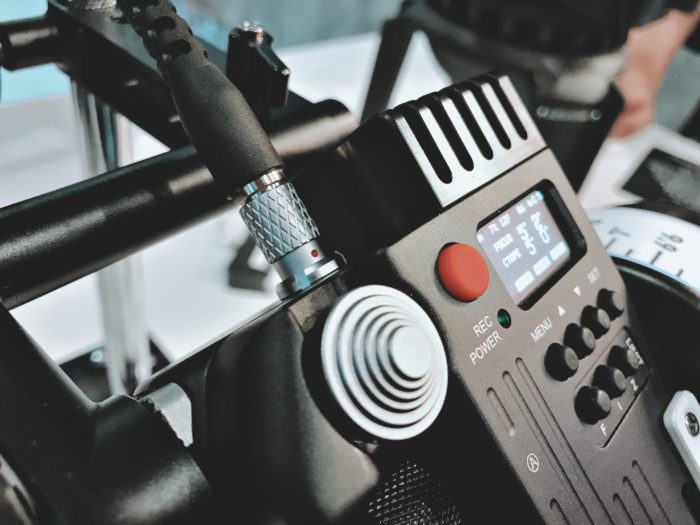I have never thought I’d welcome the sight of so many people and the hard concrete flooring of NAB as much as I did after our traditional million-mile hike through the mountains of Utah pre-NAB. (admittedly this is coming from an out of shape skinny guy/couch potato / non-mule) All jokes aside, Bryce was absolutely beautiful..

Utah Mountains
But alas, this isn’t a guide to preventing your heart from palpitating out of your chest during a hike through the canyons, it’s about the plethora of camera offerings from NAB 2019! This year, the trend seemed to be pretty clear in terms of camera department: lenses and full frame (or full format… or large format…)
Everyone’s probably aware by now that Arri has announced their Alexa Mini LF which is set to start production in June/July, with shipments starting in August. The popularity of the original Mini compared to the full body Alexa offerings has had many holding out for the release of the Mini LF and with the announcement, the general reactions seem to be promising for this new body. Although Arri confirmed they’ll be working on a S35 4K camera in 2020, the popularity of the Sony Venice and the Mini LF secures a stable ground for large format to be a real option.
Manufacturers, especially lens manufacturers, were already anticipating the industries excitement over the new Mini LF (although we have to give credit to the great job Sony did with the Venice, providing another FF option into the market for consumers.) and have showcased a number of large format optical options to supplement these bodies. Of course, there were exciting nonlarge format lens developments as well as some accessories that were announced, which we’ll touch on later on this post.
Canon Sumire
There were talks of Canon releasing a new lens set a few months before NAB and many were wondering if it was going to be a modern take on their K35’s (a la Cooke’s Panchro Classics), especially with the popularity of them increasing (even more than it already was) with full-frame / large format camera options like the Venice and LF becoming more accessible.

Canon Sumire
Just a few days before NAB, they officially announced their new FF cinema prime offering, the Sumire. It can be argued that they missed an opportunity here, especially with the momentum the original K35’s have been accumulating, but the Sumire’s seem to have a lot of buzz surrounding it regardless. When opened up, it sports a “football” bokeh that’s similar to that of the FD/K35 and a very noticeable halation around highlights. Stopped down to around 2.8 the bokeh becomes round again and halation is reigned in – essentially it becomes a CN-E Prime – for better or worse.
Tokina Vista One

The 85mm Vista One on an Alexa LF
A limited edition run (for now) of Tokina’s Vista Primes, the One’s use a single coating on their elements that allows for some reduced contrast and great flare qualities that can be controlled by having the light either on or off axis. When I panned it off of their setup at the booth and towards the show floor, it maintained good contrast and retained a very usable, sharp picture. The characteristics are noticeable, and although it’s not very subtle, it’s pleasant to look at. They have a new grey housing to differentiate it from the standard Vista’s and will be released for purchase as a set only.

The 18mm / 25mm / 50mm / 105mm Vista Ones. (35mm not pictured.)
NEO Super Baltars

The TLS Version of NEO Super Baltar
The NEO Super Baltars are completely modern remakes of the Super Baltars based on exactly the same specs and “recipe” as the original Super Baltars. Brian Caldwell, the designer behind remaking the optics, got his hands on the original Bausch & Lomb blueprints for the Super Baltars and meticulously created a modern copy of the optics as close to spec of the originals as possible. (the originals used materials that were toxic and no-longer available to use) Brian’s company Caldewell Photographic provides the cells and iris, while rehousing companies make their variants of the housings. Available focals lengths will be:
- 20mm T2.3
- 25mm T2.3
- 35mm LWD T2.3
- 35mm C T2.3
- 50mm T2.3
- 75mm T2.3
- 100mm T2.3
- 152mm T3.0
- 229mm T4.4
We were told that the 35mm and up will cover LF and Venice, with the 20mm and 25mm full frame variants following in the future.
At NAB we saw versions made from Vintage Lens Co. (White Point Optics) and TLS, with both company’s designs giving a nod to the original silver and black Super Baltars, however, any rehousing company should theoretically be able to make their own versions as well.
Chameleon Anamorphics

Chameleon Anamorphics Image Courtesy of NewsShooter
The Chameleon Anamorphics are another new offering from Caldwell Photographic that utilize a 1.79x squeeze, similar (the same) to Cooke’s 1.8x squeeze for their Full Frame Anamorphics. They will be available in both S35+ and Full Frame variants, with conversion kits available separately to allow the S35+ lenses to be converted to full frame.
The Chameleons use a single coating for their optics that presents a classic blue horizontal flare, with options down the road to change the color of the flare to a rental house or DP’s desire. (although this would be something that would need to be sent in to be completed and is a semi-permanent modification.) The colored rings around the front of the lens notate which color flare is currently set for the optics. All the lenses sport a 2.5ft close focus, which means all the focus scales would be identical throughout their sets, and all the physical dimensions of the lenses are the same across all focal lengths, including the 150mm(S35) and 225mm(FF), within their respective sets. Interestingly, they claim the 50mm – 150mm in S35+ can cover or “illuminates” full frame and creates a soft aberrational effect around the edges of the frame when used with a full frame sensor, which provides another creative choice to DP’s if they want another option aside from the edge to edge clean coverage of the actual full frame Chameleon set. There is definitely noticeable vignetting at the corners and a little at the top and bottom when doing this, but it could be desirable for certain projects / DP’s.
TLS Vega

TLS Vega
Everyone knows TLS as one of the go-to rehousing companies for vintage optics, but this year they decided to introduce a new line of full-frame lenses that are TLS branded and built. They made it known that they are not an optics design company, so the source of the glass and design are still unknown, but we do know it covers a Monstro sensor and, from what I could tell using the on-board RED Ranger LCD, produces a pretty pleasing image and are fast. (I wish I could have seen it on a bigger monitor). There’s no information on pricing or if it will even be available to purchase or if it will be a lease only option. I’m sure there will be more information regarding these surfacing closer to CineGear.
25mm Orion Anamorphic + LF Expander

25mm Orion Anamorphic
With the B-Set (32 / 50 / 80mm) only a few months out from shipping, Atlas unveiled their newest offering, the 25mm Orion Anamorphic. Still in its silver unpainted prototype housing – attendees were able to check the lens out, and with my time with it, it’s a promising wide offering to complement the rest of their set with only slight barrel distortion.
They also announced their Orion Anamorphic LF Expander – a 1.6x Expander with 1 ⅓ stop of light loss that allows their 32mm – 100mm to cover large format sensors like the Venice / LF / Monstro. The LF Expander is currently in-stock and available through Atlas.
Of course, NAB isn’t all about lenses. There were definitely some innovative accessories and support equipment that provided a fresh take on some staple accessories that are a part of almost every camera package we provide.
Arri SBP-1

Arri SBP-1
The SBP-1 (Studio Bridge Plate) is Arri’s newest bridge plate that features a top loading mechanism that allows users to clip into dovetail plates rather than sliding in from the front or back. It comes in 19mm Studio and 15mm Studio variants and the lever features a mode to lock, balance (which lets you slide on the dovetail), or release (allows you to lift the camera off of the dovetail). It’s one of those updates that seems so obvious after you see it, but I’m sure a lot of engineering went into it to ensure it was safe, effective, and easy to use.
RT Motion CTRL.3 + MDR.X System

RT Motion CTRL.3 + MDR.X System
In the world of WCU4’s and Preston FIZ systems, RTMotion is one of our favorites when budget takes priority. The MK3.1 has been a robust, reliable system for us and the go-to for AC’s when production’s on a budget. With the CTRL.3 and MDR.X System, RTMotion has started to incorporate similar features from the higher tier sets like lens mapping, cinetape readouts, and daisy chainable motors.

RT Motion CTRL.3 + MDR.X System
When used in conjunction with SmallHD monitors, it can display this data on the monitor using a cable from the hand unit to a USB port on the monitor. Although the ecosystem isn’t as streamlined as Arri or Preston’s, we’re excited for a mid-low budget option with higher end features for clients and AC’s.

RT Motion CTRL.3 + MDR.X System
SmallHD Cine7 Monitors with Arri Camera Control

SmallHD Cine7 Monitors with Arri Camera Control
The new Cine7 from SmallHD is a touch screen 7” monitor with a 1800nit daylight viewable display. With SmallHD and TeradekRT pushing for more integration, the Cine7 is able to provide a readout from the CTRL.3 / MDR.X system right on the monitor using a USB to Lemo cable that connects the monitor and CTRL.3 hand unit. If you unlock the Arri Camera Control license ($500) you are able to control camera settings from the monitor in a similar way the Transvideo monitors did (although the SmallHD UI is much cleaner and friendlier to use). You do need to use a cable that terminates to ethernet on monitor side to whatever port on the compatible camera to get the control settings though. Current integration is compatible with Amira / Mini / Mini LF, with Sony and RED integration being worked on and planned in the future.
EasyRig Flow

EasyRig Flow
The EasyRig Vario 5 with Serene attachment has become somewhat of a staple rental for bigger rental packages and EasyRig has come out with a more streamlined solution called the EasyRig Flow. It’s a new arm that replaces the 90-degree arm from a Vario 5 or Cinema 3 and has built-in spring-based vertical stabilization at the neck. The tension can be adjusted via a knob at the back, similar to the Serene. It also offers a way to lock the neck at the 90-degree axis if an operator wants to use it as a standard EasyRig with no stabilization. It can be purchased as a separate attachment or as a set along with the Vario 5.